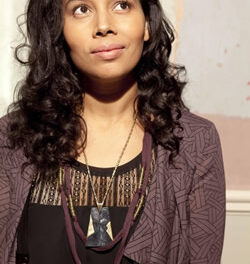My Cinema for the Ears – A Film by Uli Aumüller. 59 min + ca. 50 min of audio tracks. Bridge 9117 DVD. Copyright 2000, release 05/21/2002. $16.95
This is a fascinating documentary about two composers, Frenchman Francis Dhomont (who lives in Montréal and is affiliated with l’Université de Montréal) and American Paul Lansky (who lives in Princeton, NJ, and is affiliated with Princeton University), and the type of music they write, “musique concrète,” or “electroacoustic/électroacoustique,” although they do not approach it in the same way or produce the same types of compositions. Music played on instruments can reference a sound in nature, thereby evoking a visual image; these composers use the real sounds, which they collect on site and treat electronically to make recorded musical compositions. They manipulate sounds on tape or in digital files in a studio in the same way that a filmmaker manipulates images on film in the editing room, seeking “to hear the music in the sound.” The narrative portion of the program includes interviews with the composers, shots of them working in the field and in their home and university studios, conversations between them, and demonstrations.
A complete six-minute composition, “Un autre Printemps,” by Dhomont, inspired by the poem that Vivaldi places at the beginning of the score for his “Primavera,” is included at the end, as the soundtrack for a video montage by Robert Darroll that uses photographic elements from nature and computer-generated images representing some of these elements, closing the circle begun at the outset with the demonstration using the first two movements of the Vivaldi, focusing on the second which features the musical representation of the barking dog mentioned in the poem. We see the appropriate portion of the Vivaldi score with its notation as well as the text of the poem in French in the course of the video. We see Dhomont recording a dog barking and electronically isolating and manipulating the sound, and subsequently coaching a violist in his attempt more accurately to reproduce the real sound-to some extent an exercise in futility, since the instrument can only suggest it-with the real one in the background. This cyclical form is also emphasized by the use at the opening of an interview clip from the conclusion in which Dhomont likens his compositional process to “a voyage of discovery,” and himself to Christopher Columbus, setting out to find one thing and finding something else that is completely different. Many of Dhomont’s sounds are water-based. The video shows gorgeous shots of Canadian landscapes resembling those described by Vivaldi; we are shown the sources of the sounds we hear, focusing on the textures of the natural elements in the close-ups. Hence we have a direct link between the concrete reality in nature and the abstraction that is music. The challenge for the electroacoustic composer is to transform the sounds into a new, different, but pleasant musical experience for the ear.
The program also contains four audio tracks presenting complete works by the two composers. They are: Dhomont’s “En cuerdas” (using sounds produced by the plucked, rubbed and struck strings of a guitar), and Lansky’ s “Night Traffic,” “Table’s Clear” (featuring sons Jonah and Caleb on Kitchen Percussion-strikingly reminiscent of gamelan music), and “Idle Chatter Junior.” Lansky’s titles give away the content and its sources, which we have also seen in the documentary portion, along with the methods he uses to isolate the sounds and recombine them. The documentary shows how the sounds were found and transformed into music, but in this portion, the photographic image of the source has been eliminated as we listen-as would be the case in a concert hall. For this reviewer, a couple of the works seemed a bit long and monotonous due to their repetitive nature, but they were far from unpleasant. Their genesis and realization are intriguing, and knowing it enhances understanding and increases enjoyment.
The original soundtrack is in French, except for Lansky’s contributions during the conversations with Dhomont; each clearly understands the other’s language completely even if he does not use it. It is pleasant to be able to listen to it this way. It is also possible to view the film with English or German subtitles. The menu lists a subtitled version of the original, but I was unable to make it work; choosing that item also gave the English subtitles when French is being spoken. The twelve-page booklet contains, in addition to track listings and credits, short essays by filmmaker
Aumüller, both of the composers (Dhomont’s in both the French original and English translation), and video artist Darroll, setting forth both their esthetic and their creative goals in the individual works or in their contribution to the project. It is an interesting complementary read. There are a few sloppy production errors in it including a couple of typos, and, curiously, a space between the apostrophe and the ‘o’ in “l’oreille” on the front cover of the DVD case.
This is perhaps not a film you would want to watch numerous times (as you might listen to a CD of a classical composition) unless you were a composer or a student of electronic composition, but it is most definitely worth a second, even a third immediate repeat viewing, and one you would want to come back to again at a later date. It is a valuable document, an artistic success, and an informative, insightful and enjoyable viewing and listening experience. Highly recommended.











